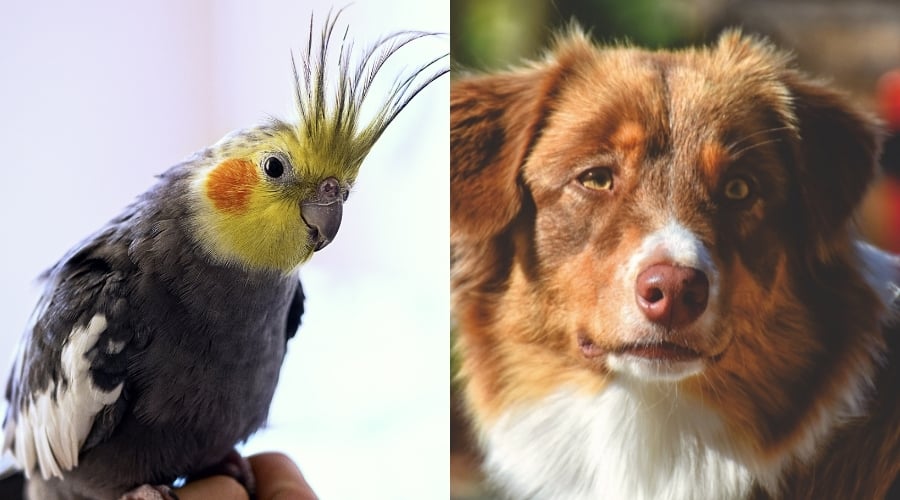Answers To Your Toughest Dog-related Questions Are Here

When your dog is well behaved and happy, you'll have a great relationship. When your dog isn't happy, you'll find your pillows torn into bits of fluff. You're not the only owner who wants to learn how to deal with their dog, so we've collected a bunch of advice from other owners who have been through it all before.
You should only try to teach your dog one new command during each training session. Even if you think your dog is good at picking up on things and will have no issues with that, it is much less confusing for you and him if you focus on just one thing at a time.
Research a particular breed of dog you may be interested in before bringing him home. Lots of people make the mistake of falling in love with a type of dog, then find out later that the animal isn't really for them. Chihuahuas, for example, are a trendy type, but very difficult to fully potty train, especially in colder climates!
If your dog is still getting used to the grooming process, only work with him or her in short bursts. Groom for about five minutes and then stop and move on to another activity. Eventually, start adding on two or three minutes to your total grooming time until your pet is able to handle a full session.
Do an article to dog breeds that start with l have a "wrinkly" dog, like a bulldog? If so, you have to be conscientious about the grooming process in order to help keep your pet clean. After you brush, take a baby wipe and use it to get in between the folds on their body. Make sure, though, to get them fully dry after doing so.
Keep your dog at a healthy weight. Plenty of dogs are overweight, and just like humans, this can lead to health issues. People tend to overfeed their dogs, and many also feed them table scraps. A dog doesn't need as many calories as most people think; talk to your vet about how much you should feed him each day, and what food is most suitable. A vet will advise you based on his size, age and lifestyle.
Ease your dog into knowing a new baby that comes into your home. Dogs can be very jealous and you need to continue to show him plenty of love an affection, even though you've got a brand new bundle of joy in your life. Talk to the dog as you handle the baby and keep him in the loop.
Unless you're okay with your dog playing with your shoes and other things around your home, buy him some toys. He will enjoy having things of his own, particularly if they are interactive like pull-toys you can use together. Also buy him things he can use to occupy himself and stay out of trouble!
Give your dog a great place to sleep. Every dog needs a bed to call his own that is temperature controlled and comfortable. If not, the dog may alternate sleeping locations between undesirable locations, such as your sofa when you're not watching. A bed also gives him a great sense of security and belonging.
To protect your dog in the event he is lost or stolen, have a microchip surgically implanted by your vet. These handy chips store data that can be retrieved by a shelter or animal officer and used to contact you. They are painless to put in and offer peace of mind for the pet lover!
Use positive reinforcement to teach your dog the habits that you would like to see from them. For example, if you notice that your dog barks anytime someone enters your home you could reward him for not barking with a treat. The dog will then associate being quite with the reward that he will receive.
Keep your dog's teeth clean and healthy with regular brushing. Most canines don't mind you brushing their teeth, provided you introduce them to the process slowly and gently. Use a specially designed dog brush, along with other products made just for him. Remember to provide him with toys and biscuits that will also clean and protect his teeth.
Be a responsible dog owner, to represent the species well. For example, Pit Bulls are feared and often even hated in most places these days, due to irresponsible ownership. People tend to blame the animals when in fact it's the human factor influencing the dog's behavior. Train your dog well and leave a good impression on others!
Never give your dog away for free, no matter how desperate you might feel to get rid of it quickly. Even if you can not care for the animal, it is still your responsibility to be sure that it will have a good life to come. Instead, take the time to investigate the person that you will give it to and charge a re-homing fee to ensure that they are serious about caring for the animal.
Keep in mind that the pads on a dog's foot are very similar to the skin at the bottom of a human foot. This means that they have a hard time withstanding extreme heat and cold. If you have to take your dog out in extreme weather, make sure that you cover their paws, or you don't have them out for very long.
It is wise to check your area to find out what the local leash laws are. Many areas require a dog to be leashed at all times if it is not on your property. keeping your dog on a leash is a good idea anyway, as it can be dangerous to let your pet run unattended, where he could be hit by a car, or fight with other dogs.
If training your dog is more than you can handle, you should consider sending it to obedience school. Do some research to find out more about the different obedience schools in your area and talk to other dog owners to find the best school possible. It is best to send your dog to obedience school while it is still a young pup.
If your dog is covering everything in the house with his shedding fur, grab a paper towel. Lightly wet it with water and rub it down his back in the direction of fur growth. The loose hair should come off easily on the paper towel and your dog will love the attention too!
As you can see, it's not terribly difficult to deal with caring for a dog. It does take a some time and patience, but it is possible to do well at it. Just take in everything you've read here and you should be able to help your dog live a happy and healthy life.
Working Australian Shepherd vs Show – Which is a Better Choice?
As a newcomer to the Aussie scene, you are sure to be repeatedly confronted with the two terms “working Australian Shepherd” and “show Australian Shepherd”.
What is behind these terms and how do these dogs differ from each other?
Can a newbie train a working Australian Shepherd, or should a family choose a dog from a show line?
Show Australian Shepherd

These dogs are primarily bred for the purpose of achieving the highest possible rating at (beauty) shows. There are such exhibitions in many places and by many associations.
Puppies that do not reach the quality of a future show champion are often offered as easy-to-use family dogs.
At the exhibitions, the dogs are judged in rings, separated according to males and females and different age groups, solely with regard to their beauty and the correctness of their physique.
Character, motivation, performance, health, robustness, and sporting opportunities play a subordinate or no role in the assessment. It’s all about having the most beautiful dog possible in the ring.
Often the show judges prefer dogs with a lot of colors and distinctive markings, a very strong, heavy build, a lot of fur, and with large sizes within the standard.
Since these exhibitions often take place with many people and dogs in a confined space, there are often few opportunities to run around. The dogs often spend a long time in so-called exhibition cages at the exhibition until it is their turn. Dogs with a “chilled” mind is much easier, and it turns out that show line breeders usually breed a type that can be characterized as follows:
They are often more difficult to motivate and sensitive in warm temperatures due to the pronounced coat and strong undercoat. Sometimes they have to get a lot of grooming so that the undercoat does not become matted and starts to smell.
Character defects such as fearfulness, insecurity, or aggressiveness can easily be covered up by an experienced exhibitor. Therefore the championship does not guarantee a first-class character.
Working Australian Shepherd
The original Australian Shepherd was and is still a pure working dog who tirelessly helps the ranchers with their work.
He was selected to have a lot of interest in cattle, to be easily trainable, to have a high level of stimulus and drive control, and the desire to work with and please his humans.
This package creates the fascination of the dog. It seems as if he only has eyes for his owner, obeys the slightest word, can do the most incredible tricks, and is successful in every area of dog sport.
But for breeding, the following applies: “If you don’t use it, you lose it”.
This means that characteristics and physical traits that are not constantly requested and checked by the breed as part of a meaningful selection are lost or changed to a form that no longer corresponds to the original characteristics.
Working line dogs were selected solely on the basis of their work performance and robust health, which means that these dogs have comparatively few problems with diseases of the musculoskeletal system such as hip dysplasia, elbow dysplasia, and Osteochondritis dissecans. Epilepsy is also comparatively rare in working Australian Shepherds.
However, since they are not bred with a particular beauty standard in mind, they are often much lighter and smaller in size, have lighter, narrower heads and often significantly less and very easy-to-care-for fur, and are therefore often not as colorful and impressive as their colleagues from the show ring. Upright ears instead of the button ears desired for the show ring also appear from time to time.
https://petsroof.com/working-australian-shepherd-vs-show/
I was guided to that write-up about Dogs from someone on our other web address. For those who enjoyed our post plz consider to share it. Bless you for your time. Return soon.
